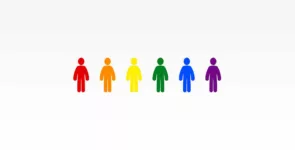Artificial Intelligence (AI) is transforming various aspects of our lives, from healthcare to finance to personal assistants. However, as AI systems become more integrated into daily life, the issue of gender bias within these technologies has come to the forefront. Gender bias in AI not only perpetuates existing inequalities but can also create new forms of discrimination.
Understanding Gender Bias in AI
Gender bias in AI occurs when an algorithm systematically favors one gender over another, leading to unfair treatment and outcomes. This bias against gender equality can manifest in various ways, such as the underrepresentation of women in training data, biased decision-making processes, and reinforcement of gender stereotypes.
How Gender Bias Gets Embedded in AI
- Training Data: AI algorithms are trained on large datasets that reflect historical and societal biases. If these datasets are skewed towards one gender, the AI system will likely perpetuate those biases. For example, if a recruitment AI is trained on historical hiring data where men were predominantly chosen for tech roles, it might favor male candidates in the future.
- Algorithm Design: The biases of those who design and develop AI systems can unintentionally influence the algorithms. If the development team lacks diversity, the perspectives and experiences of underrepresented groups may not be adequately considered, leading to biased outcomes.
- Lack of Diverse Testing: AI systems need to be tested on diverse populations to ensure they perform equitably. When testing lacks diversity, the system might work well for some groups but fail for others, embedding gender bias in its functionality.
Challenges of Gender Bias in AI
Reinforcement of Stereotypes
AI systems that exhibit gender bias can reinforce harmful stereotypes. For instance, AI voice assistants like Siri and Alexa often have female voices and perform tasks traditionally associated with women, such as scheduling and providing information. This can perpetuate the stereotype that women are meant for supportive and administrative roles.
Inequitable Outcomes
Biased AI systems can lead to unfair outcomes in critical areas like healthcare, finance, and employment. For example, an AI used in healthcare that is biased towards male patients might result in poorer health outcomes for women. Similarly, biased financial algorithms could impact credit scoring and loan approvals, disproportionately disadvantaging women.
Erosion of Trust
Gender bias in AI erodes public trust in these technologies. If users believe that AI systems are unfair, they are less likely to adopt and rely on them. This skepticism can hinder the widespread benefits that AI could bring to society.
Approaches to Mitigate Gender Bias in AI
Diverse and Inclusive Data Collection
One of the fundamental steps in mitigating gender bias in AI is ensuring that the training data is diverse and representative. This involves:
- Data Audits: Regularly auditing datasets for gender representation and other demographic factors.
- Balanced Datasets: Curating datasets that include balanced representation from different genders and other underrepresented groups.
- Synthetic Data: Using synthetic data generation techniques to fill gaps in representation when real data is scarce.
Inclusive Algorithm Design
Algorithm design should incorporate diverse perspectives to minimize bias. This can be achieved by:
- Diverse Teams: Building diverse development teams that include individuals from different genders, ethnicities, and backgrounds.
- Bias Detection Tools: Employing tools and techniques to detect and mitigate bias during the algorithm development process.
- Ethical Guidelines: Establishing and adhering to ethical guidelines that prioritize fairness and inclusivity in AI design.
Rigorous Testing and Validation
AI systems should undergo rigorous testing and validation to ensure they work equitably across different populations. This includes:
- Diverse Testing Groups: Testing AI systems on diverse groups to identify and address any biases.
- Continuous Monitoring: Implementing continuous monitoring mechanisms to detect and correct biases as they emerge.
- Feedback Loops: Creating feedback loops where users can report biases and developers can iteratively improve the system.
Transparent and Accountable Practices
Transparency and accountability are crucial in addressing gender bias in AI. Organizations should:
- Document Processes: Clearly document the processes used in data collection, algorithm design, and testing to provide transparency.
- Explainability: Develop AI systems that are explainable, allowing users to understand how decisions are made.
- Accountability Frameworks: Establish frameworks for accountability, where organizations are responsible for the outcomes of their AI systems.
Gender bias in AI is a significant challenge that requires concerted efforts to address. By understanding how bias gets embedded in AI systems and implementing strategies to mitigate it, we can develop more fair and equitable technologies. Ensuring diverse data collection, inclusive algorithm design, rigorous testing, transparent practices, and collaborative efforts are key steps in this journey.
Written by Scott Weathers








